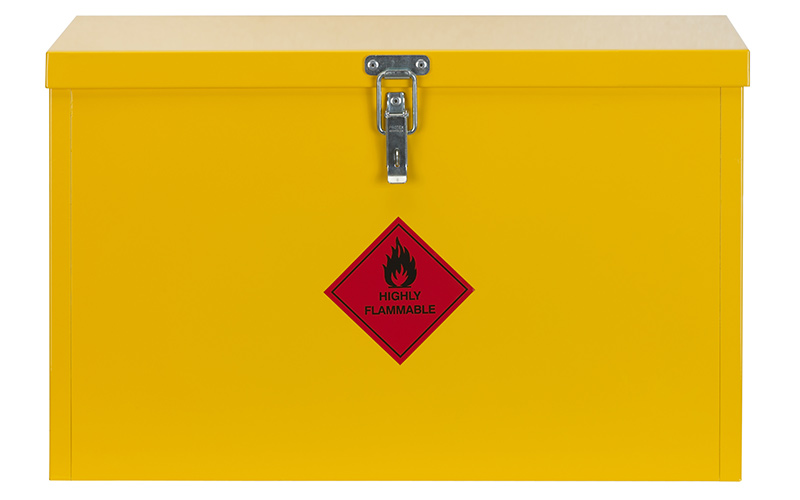Storage Cabinets Help Prevent Flammable and Combustible Liquid Fires

Flammable liquid fires can be avoided by storing flammable liquids in UL listed storage cabinets, while the liquids are not in use.
Flammable Liquid Fires
Flammable liquid fires start small—but burn with great intensity and are difficult to extinguish. Fires of this type can be avoided by storing flammable liquids, which are not actually in use, in UL listed storage cabinets.
Advantages
Storage cabinets for flammable liquid containers:
- protect flammable liquids against flash fires;
- prevent excessive internal temperature in the presence of fire;
- contain spilled flammable liquids to prevent the spread of fire; and
- permit the storage of flammable liquids near points of operation.
Requirements
Requirements for safety cabinets include the following:
- The cabinet should be constructed of 18-gauge steel with double-wall design, providing 1.5 inches of air space between inner and outer walls.
- All joints and seams should be riveted or welded.
- A two-inch leak-tight sill or well should be provided at the bottom of the cabinet to contain spilled or leaking flammable liquids.
- Doors should be constructed equivalent to the walls of the cabinet with a three-point latch and kept closed when not in use.
Ventilation
Adequate ventilation reduces flammable vapor concentrations and eliminates the possibility of an accident. Outside vents are not required on cabinets but this additional protection should be considered if the installation is practical. If not vented to the outdoors, vent openings should be sealed with a properly fitted metal bung.
Capacity of Storage
Storage cabinets should not contain more than 60 gallons of flammable liquids* or 120 gallons of combustible liquids*.
No more than three (3) cabinets may be located in a single fire area. However, industrial occupancies may have additional cabinets in the same fire area, if the additional cabinet or group of no more than three (3) cabinets is separated from the other cabinets by at least 100 feet.
Label Cabinets:
All cabinets should be labeled in conspicuous lettering.
“FLAMMABLE—KEEP FIRE AWAY”
*General Definitions:
Requirements for safety cabinets include the following:
1. Flammable Liquids
- Flash Point below 100°F (37.8°C) and shall be known as a Class I Liquid.
- Class IA–Flash Point below 73°F (22.8°C) with boiling point below 100°F (37.8°C).
- Class IB–Flash Point below 73°F (22.8°C) with boiling point at or above 100°F (37.8°C).
- Class IC–Flash Point at or above 73°F (22.8°C) and below 100°F (37.8°C).
2. Combustible Liquids
- Flash Point at or above 100°F (37.8°C).
- Class II–Flash Point at or above 100°F (37.8°C) and below 140°F (60°C).
- Class IIIA–Flash Point at or above 140°F (60°C) and below 200°F (93.4°C).
- Class IIIB–Flash Point at or above 200°F (93.4°C).









